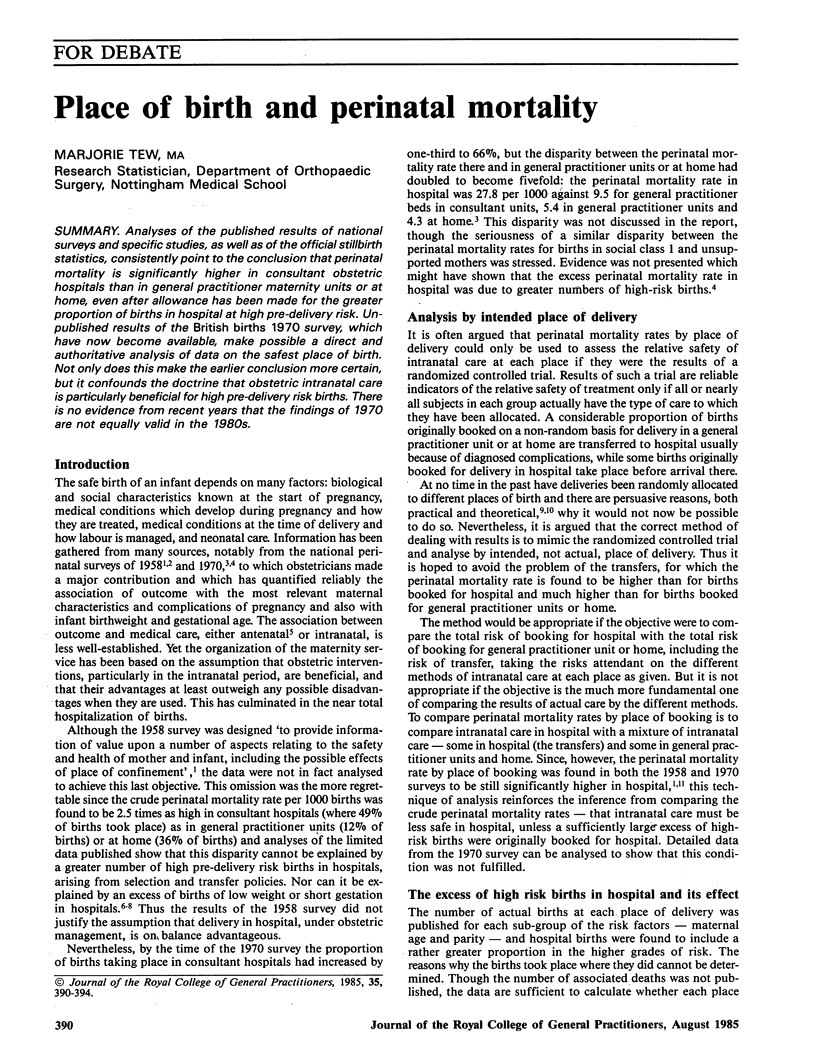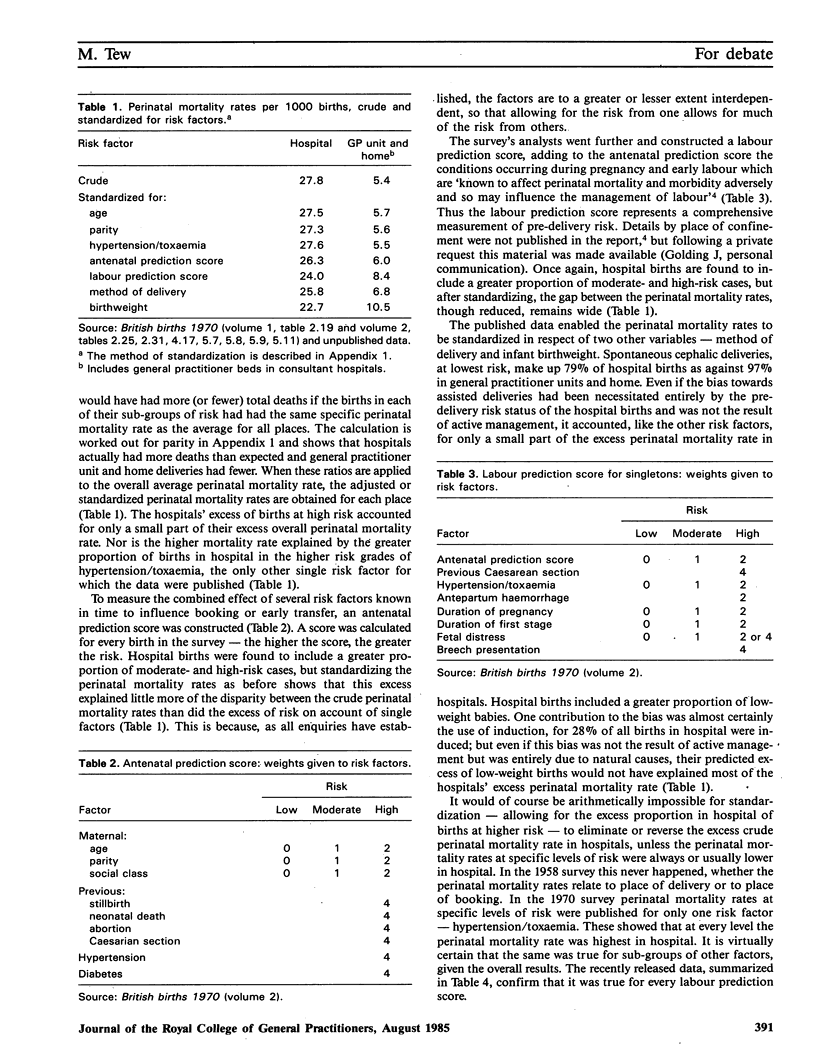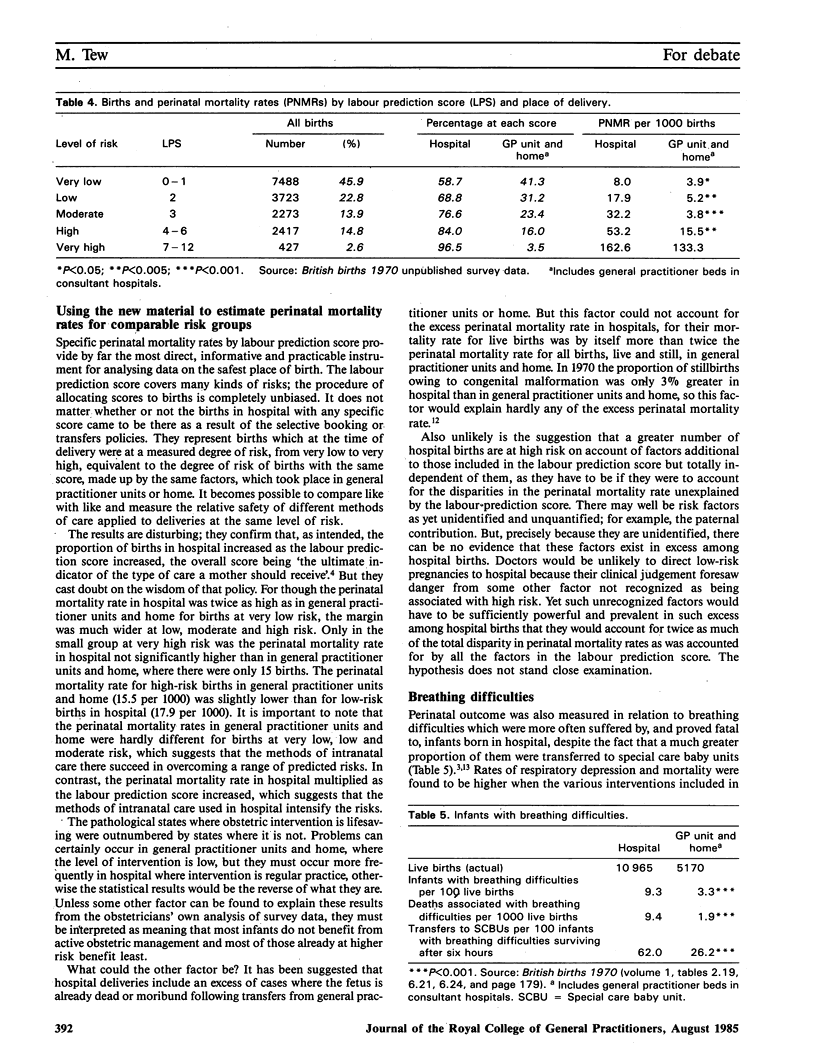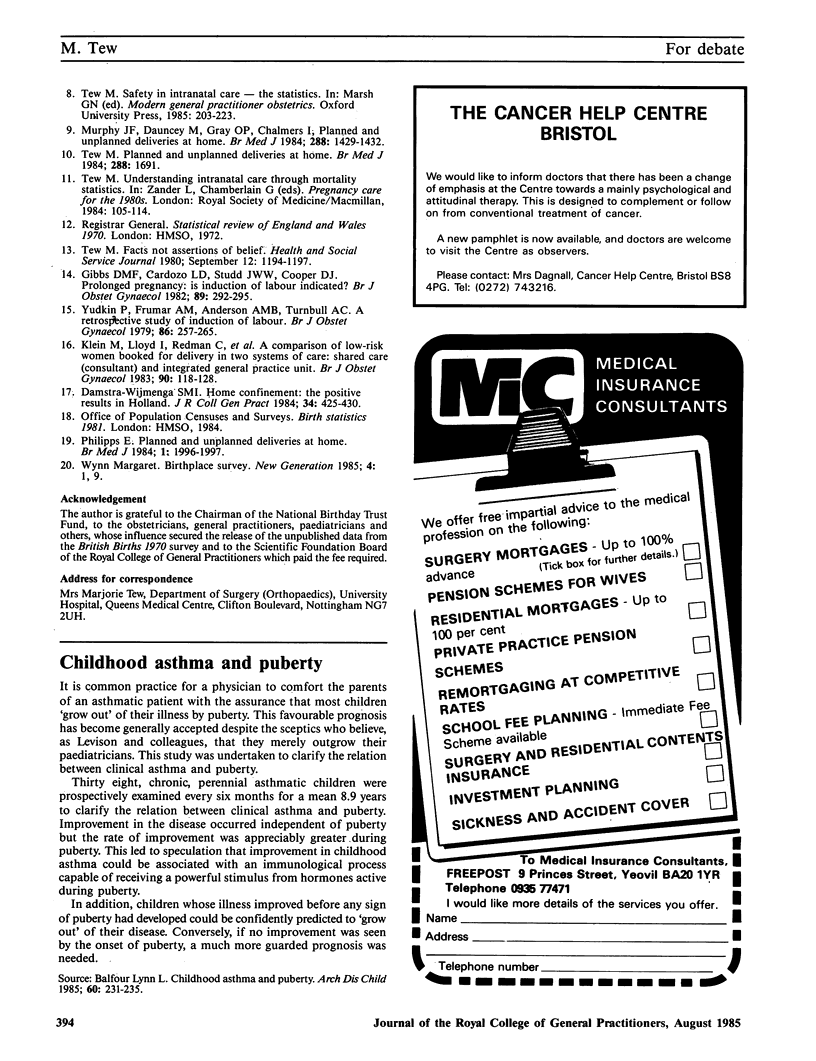Abstract
Analyses of the published results of national surveys and specific studies, as well as of the official stillbirth statistics, consistently point to the conclusion that perinatal mortality is significantly higher in consultant obstetric hospitals than in general practitioner maternity units or at home, even after allowance has been made for the greater proportion of births in hospital at high pre-delivery risk. Unpubliched results of the British births 1970 survey, which have now become available, make possible a direct and authoritative analysis of data on the safest place of birth. Not only does this make the earlier conclusion more certain, but it confounds the doctrine that obstetric intranatal care is particularly beneficial for high pre-delivery risk births. There is no evidence from recent years that the findings of 1970 are not equally valid in the 1980s.
Full text
PDF




Selected References
These references are in PubMed. This may not be the complete list of references from this article.
- Damstra-Wijmenga S. M. Home confinement: the positive results in Holland. J R Coll Gen Pract. 1984 Aug;34(265):425–430. [PMC free article] [PubMed] [Google Scholar]
- Gibb D. M., Cardozo L. D., Studd J. W., Cooper D. J. Prolonged pregnancy: is induction of labour indicated? A prospective study. Br J Obstet Gynaecol. 1982 Apr;89(4):292–295. doi: 10.1111/j.1471-0528.1982.tb04698.x. [DOI] [PubMed] [Google Scholar]
- Klein M., Lloyd I., Redman C., Bull M., Turnbull A. C. A comparison of low-risk pregnant women booked for delivery in two systems of care: shared-care (consultant) and integrated general practice unit. II. Labour and delivery management and neonatal outcome. Br J Obstet Gynaecol. 1983 Feb;90(2):123–128. doi: 10.1111/j.1471-0528.1983.tb08895.x. [DOI] [PubMed] [Google Scholar]
- Murphy J. F., Dauncey M., Gray O. P., Chalmers I. Planned and unplanned deliveries at home: implications of a changing ratio. Br Med J (Clin Res Ed) 1984 May 12;288(6428):1429–1432. doi: 10.1136/bmj.288.6428.1429. [DOI] [PMC free article] [PubMed] [Google Scholar]
- Tew M. Obstetric hospitals and general-practitioner maternity units--the statistical record. J R Coll Gen Pract. 1977 Nov;27(184):689–694. [PMC free article] [PubMed] [Google Scholar]
- Tew M. Planned and unplanned deliveries at home. Br Med J (Clin Res Ed) 1984 Jun 2;288(6431):1691–1692. doi: 10.1136/bmj.288.6431.1691-c. [DOI] [PMC free article] [PubMed] [Google Scholar]
- Yudkin P., Frumar A. M., Anderson A. B., Turnbull A. C. A retrospective study of induction of labour. Br J Obstet Gynaecol. 1979 Apr;86(4):257–265. doi: 10.1111/j.1471-0528.1979.tb11252.x. [DOI] [PubMed] [Google Scholar]


